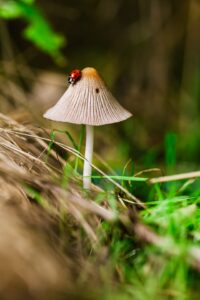
Durham University is working to protect, restore and enhance local biodiversity
Durham University are committed to reducing their environmental impact and improving the local environment for their staff, students and the wider community, and to do just that have developed their biodiversity strategy. The strategy was released in January of this year and was made possible by the hard and dedicated work of both students and the staff from the Department of Bioscience and members of the Estates and Facilities Team.
The strategy
The University has a considerable estate, totalling 251 hectares of land across County Durham, this includes many areas of high biodiversity value and potential.

To ensure University land is used as a tool to combat loss of biodiversity, the newly released strategy has set targets that include:
- Net gain of biodiverse habitats.
- Enhancement of biodiversity through habitat creation schemes.
- Engagement with biodiversity conservation.
- To maintain or enhance the estate’s current species richness.
- To maintain or enhance population levels of priority species.
These targets will see new University developments planted with appropriate, native plants where possible, native hedges being restored, an increase in the number of bug, bat and bird boxes on the estate, work to enhance soil health and much more!
Why is this important?

Britain is one of the most nature depleted countries in Europe and to reflect the urgent nature of this work, an ecological emergency was declared by Durham’s cabinet on the 6 April 2022. Whilst significantly threatened by climate change, nature within County Durham is a vital part of the solution to it; when healthy, nature can prevent flooding, cool environments, and store carbon to mitigate further climate change. You can read more about what the council are doing to combat climate change in our Climate Emergency Response Plan.

